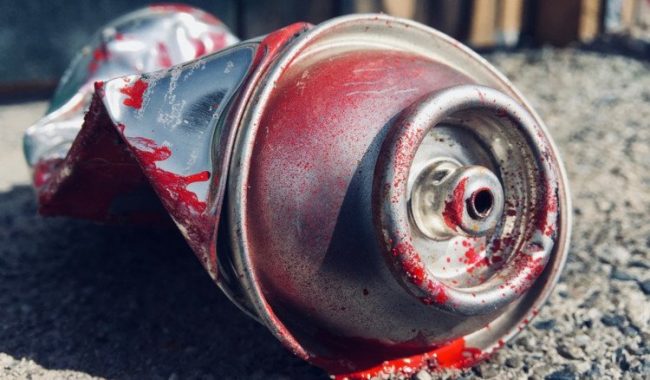How a Can of Spray Paint Works: Interesting Facts
-
Pete Ortiz
- Last updated:

You may use spray paint all of the time, but have you ever stopped to wonder how it works? Knowing what exactly happens when you shake up your can and let it loose may have the potential to improve your technique.
At the very least, the knowledge makes for a fun little anecdote, right?
Read on for a quick look at how a can of paint spray works.
How it Works
The spray paint can is pretty simple. There are three critical components: the cylindric container, the paint, and the propellant.
Of course, these aren’t the only components. There is still a release valve, and some inner components that make everything work the way it is supposed to, but regardless, these three components are the most critical aspects of the tool.
During the manufacturing phase of a spray paint cans life, the aluminum cylinder is filled with paint, then injected with some type of gas propellant.
Once the propellant has been integrated into the mixture, the valve is compressed, and the contents become highly pressurized. Simple right? But very effective.
There are several smaller components that turn this concentration into the fine mist of paint that you expect when you press down on the can.

The nozzle, the dip tube, and the pea complete the package. The nozzle, naturally, both serves to output the paint, and provides the mechanism for activating the other components.
When you press down on the nozzle, you can experience a significant change in pressure. This change forces paint up into the dip tube where it is subsequently transmitted as a fine mist onto your workpiece.
But what about the pea? The pea is actually nothing more than a small metal ball bearing that serves to support the mixture of paint and propellant in the can.
You know the sound that the can makes when you shake it? That’s the pea. The shaken pea serves to disrupt the blend and ensures that it will be ready to propel paint when needed.
As the pea travels through the paint, it further mixes the paint and the propellant. Essentially, it is an insurance policy that constantly guarantees the can is in working order.
It’s actually for this exact reason that best practices have the user shaking the can before they spray.
And that is really all that there is to it. The spray paint can is a simple invention, but within the simplicity is a high level of ingenuity. Thanks to several basic parts, and a simple blend of gas and propellant, do it yourselfers and professionals alike now have affordable access to an endlessly useful product.
Conclusion
Glad that you know? Understanding the ins and outs of spray paint may not do all that much to make you better at your craft, but it sure is fascinating.
Now that you have read this quick summary, you can sound really smart the next time that you go to the hardware store.



